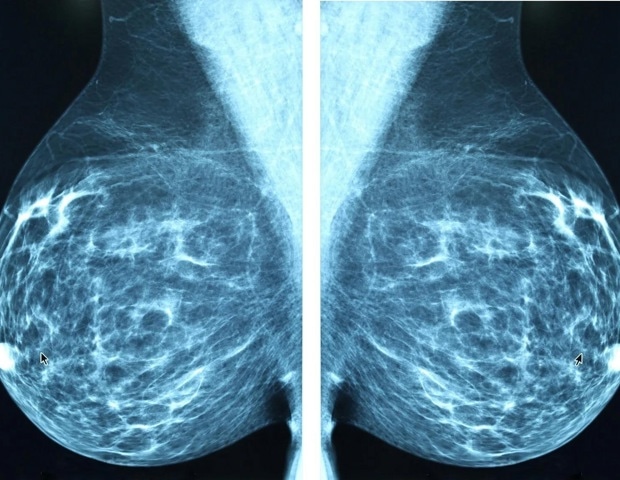New model forecasts 10-year heart risk after breast cancer treatment


A multi-institution research team led by Georgetown University Medical Center has developed and validated a model estimating the 10-year risk of heart failure or cardiomyopathy after early-stage breast cancer treatment. Separating women into low, moderate, and high risk ranged from 1.7% in the lowest to 19.4% in the highest group.
Cardiac risk after treatment
Cancer and cardiovascular disease rank among the most common causes of morbidity and mortality in women in the US. Almost 20% of the 3 million breast cancer survivors have cardiovascular disease. Breast cancer survivors face greater cardiovascular disease-related mortality compared with the general population, with cardiovascular disease listed among the leading causes of death after diagnosis.
Five-year relative survival for early-stage disease exceeds 90%, though treatment-related cardiac effects can place burdens on quality of life. Heart failure and cardiomyopathy are the most common cardiac toxic effects related to breast cancer treatment.
General population heart failure models may not apply to women treated for breast cancer, and prior breast cancer-specific tools have been limited by small samples, short follow-up, lack of validation, and limited generalizability.
In the study, “Risk Prediction Model for Development of Heart Failure or Cardiomyopathy After Breast Cancer Treatment,” published in JAMA Oncology, researchers designed a longitudinal cohort study to develop and validate a model predicting 10-year risk of heart failure or cardiomyopathy in women receiving systemic treatment for invasive early-stage breast cancer to inform cardiac risk management.
Women aged 18 to 79 years with newly diagnosed invasive local or regional breast cancer from 2008 to 2020 within Kaiser Permanente Southern California formed the cohort. Follow-up was a median of 5.2 years and a maximum of 14 years. A total of 26,044 women were included after exclusions, with random split into derivation (60%) and validation (40%) cohorts.
Predictors spanned breast cancer treatments, cardiovascular risk factors and cardiovascular conditions occurring within 1 year before diagnosis, and sociodemographics including age, race and ethnicity, and area-level socioeconomic status. Incident heart failure or cardiomyopathy was defined by any inpatient diagnosis based on ICD codes or by at least two outpatient diagnoses within 3 months.
Clear separation of risk
Accuracy in predicting those who would later develop heart failure or cardiomyopathy was good early and strengthened over time, reaching strong performance after 10 years. Agreement between predicted and observed outcomes matched closely throughout the follow-up period.
At 10 years, about 2 in 100 women in the low-risk group developed heart failure or cardiomyopathy, compared with about 6 in 100 in the middle group and 19 in 100 in the high group. Women in these three groups showed distinct long-term survival patterns, and differences across groups were statistically significant.
Risk factors
Older women faced greater risk than younger women. Those aged 65 to 79 years were most likely to develop heart failure or cardiomyopathy. Anthracyclines carried the highest treatment-related risk, followed by ERBB2-targeted therapy given without anthracyclines, then nonanthracycline chemotherapy.
Hypertension, diabetes, obesity, smoking, prior ischemic events, and other cardiovascular conditions all added risk. Endocrine therapy showed no association with heart failure or cardiomyopathy, and had no meaningful interactions among the predictors.
The authors state the model can inform risk-guided cardiac management for women treated for early-stage breast cancer.
An editorial discussing the research was also published in JAMA Oncology.
Written for you by our author Justin Jackson, edited by Gaby Clark, and fact-checked and reviewed by Robert Egan—this article is the result of careful human work. We rely on readers like you to keep independent science journalism alive.
If this reporting matters to you,
please consider a donation (especially monthly).
You’ll get an ad-free account as a thank-you.
More information:
Ana Barac et al, Risk Prediction Model for Development of Heart Failure or Cardiomyopathy After Breast Cancer Treatment, JAMA Oncology (2025). DOI: 10.1001/jamaoncol.2025.4178
Patricia A. Ganz et al, Do All Breast Cancer Survivors Need to See a Cardiologist?, JAMA Oncology (2025). DOI: 10.1001/jamaoncol.2025.4141
© 2025 Science X Network
Citation:
New model forecasts 10-year heart risk after breast cancer treatment (2025, November 4)
retrieved 4 November 2025
from
This document is subject to copyright. Apart from any fair dealing for the purpose of private study or research, no
part may be reproduced without the written permission. The content is provided for information purposes only.
link






